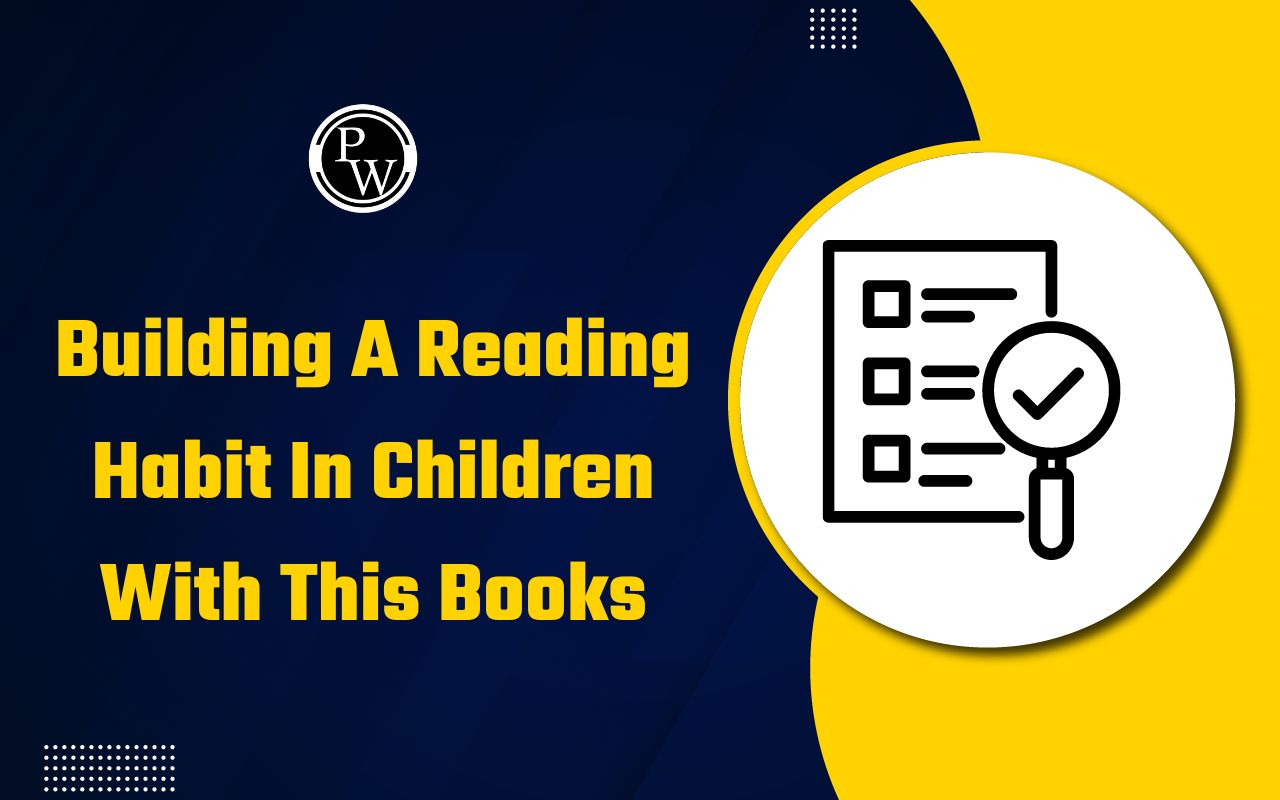NCERT Solutions for Class 10 Hindi Chapter 5 Suryakant Tripathi

NCERT Solutions for Class 10 Hindi Chapter 5 Suryakant Tripathi: Candidates who are going to take CBSE Class 10 board exam must go through Class 10 Hindi Chapter 5 Question Answer to understand the topic more deeply. The faculty of Physics Wallah have developed these Class 10 Hindi Chapter 5 Question Answers to help the students with their CBSE Class 10 Board exam preparation. Students can check Class 10 Hindi Ch 5 Question Answers in this article.
Check out: CBSE Sample Question Papers Class 10 Hindi - A
Class 10 Hindi Chapter 5 Question Answers
Students can check the Class 10 Hindi Ch 5 Question Answers below. Go through these questions from Hindi Chapter 5 Class 10 to be prepared for the board exam.
1. कवि बादल से फुहार, रिमझिम या बरसने के स्थान पर ‘गरजने’ के लिए कहता है, क्यों?
उत्तर:- कवि ने बादल से फुहार, रिमझिम या बरसने के लिए नहीं कहता बल्कि ‘गरजने’ के लिए कहा है; क्योंकि कवि बादलों को क्रांति का सूत्रधार मानता है। ‘गरजना’ विद्रोह का प्रतीक है। कवि बादलों से पौरुष दिखाने की कामना करता है। कवि ने बादल के गरजने के माध्यम से कविता में नूतन विद्रोह का आह्वान किया है।
Read More: NCERT Solutions for Class-10 Hindi Chapter-1 Surdas
2. कविता का शीर्षक उत्साह क्यों रखा गया है ?
उत्तर:- कवि क्रांति लाने के लिए लोगों को उत्साहित करना चाहते हैं। बादलों में भीषण गति होती है उसी से वह संसार के ताप हरता है। कवि ऐसी ही गति, ऐसी ही भावना और शक्ति चाहता है। बादल का गरजना लोगों के मन में उत्साह भर देता है। इसलिए कविता का शीर्षक उत्साह रखा गया है।
3. कविता में बादल किन-किन अर्थों की ओर संकेत करता है ?
उत्तर:- उत्साह’ कविता में बादल निम्नलिखित अर्थों की ओर संकेत करता है –
1. जल बरसाने वाली शक्ति है।
2. बादल पीड़ित-प्यासे जन की आकाँक्षा को पूरा करने वाला है।
3. बादल कवि में उत्साह और संघर्ष भर कविता में नया जीवन लाने में सक्रिय है।
4. शब्दों का ऐसा प्रयोग जिससे कविता के किसी खास भाव या दृश्य में ध्वन्यात्मक प्रभाव पैदा हो, नाद-सौंदर्य कहलाता है। उत्साह कविता में ऐसे कौन-सेशब्द हैं जिनमें नाद-सौंदर्य मौजूद है, छाँटकर लिखें।
उत्तर:-
1. “घेर घेर घोर गगन, धाराधर ओ!
2. ललित ललित, काले घुँघराले,
बाल कल्पना के-से पाले
3.“विद्युत-छवि उर में” कविता की इन पंक्तियों में नाद-सौंदर्य मौजूद है।
Read More: NCERT Solutions for Class-10 Hindi Chapter 2 Tulsidas
-
रचना-अभिव्यक्ति
1. जैसे बादल उमड़-घुमड़कर बारिश करते हैं वैसे ही कवि के अंतर्मन में भी भावों के बादल उमड़-घुमड़कर कविता के रूप में अभिव्यक्त होते हैं। ऐसे ही किसी प्राकृतिक सौंदर्य को देखकर अपने उमड़ते भावों को कविता में उतारिए।
उत्तर:- दूर आसमानों में बादलों की छवि देख,
जगी मेरे मन में भी आस
प्यास के मारों को मिली राहत की साँस
तड़पती विरहणी की प्रेमी से मिलन की वजह खास
धरती को भी मिली तृप्ति की आस
मोर भी करने लगा प्रीतम को मिलने का प्रयास
किसान के आँखों में भी जगी एक चमक खास
देखो बादल आया अपने साथ कितनी आस।
2. छायावाद की एक खास विशेषता है अन्तर्मन के भावों का बाहर की दुनिया से सामंजस्य बिठाना। कविता की किन पंक्तियों को पढ़कर यह धारणा पुष्ट होती है? लिखिए।
उत्तर:- कविता के निम्नलिखित पंक्तियों को पढ़कर यह धारणा पुष्ट होती है कि प्रस्तुत कविता में अन्तर्मन के भावों का बाहर की दुनिया से सामंजस्य बिठाया गया है :
आभा फागुन की तन
सट नहीं रही है।
और
कहीं साँस लेते हो,
घर घर भर देते हो,
उड़ने को नभ में तुम,
पर पर कर देते हो।
यह पंक्तियाँ फागुन और मानव मन दोनों के लिए प्रयुक्त हुई हैं।
Read More: NCERT Solutions for Class-10 Hindi Chapter 3 Dev
3. कवि की आँख फागुन की सुंदरता से क्यों नहीं हट रही है?
उत्तर:- फागुन बहुत मतवाला, मस्त और शोभाशाली है। फागुन के महीने में प्राकृतिक सौंदर्य अपने चरम पर होता है। उसका रूप सौंदर्य रंग-बिरंगे फूलों और हवाओं में प्रकट होता है। इसलिए आँखें फागुन की सुन्दरता से मंत्रमुग्ध होकर हटाने से भी नहीं हटती।
4. प्रस्तुत कविता में कवि ने प्रकृति की व्यापकता का वर्णन किन रूपों में किया है ?
उत्तर:- प्रस्तुत कविता ‘अट नहीं रही है’ में कवि सूर्यकान्त त्रिपाठी ‘निराला’ जी ने फागुन के सर्वव्यापक सौन्दर्य और मादक रूप के प्रभाव को दर्शाया है। फागुन के सौंदर्य को असीम दिखाया है। उसे हर जगह छलकता हुआ दिखाया है। घर-घर में फैला हुआ दिखाया है। यहाँ ‘घर-घर भर देते हो’ में फूलों की शोभा की और संकेत है और मन में उठी खुशी की और भी। उड़ने को पर पर करना भी ऐसा सांकेतिक प्रयोग है। यह पक्षियों की उड़ान पर भी लागू होता है और मन की उमंग पर भी। सौंदर्य से आँख न हटा पाना भी उसके विस्तार की झलक देता है।
5. फागुन में ऐसा क्या होता है जो बाकी ऋतुओं से भिन्न होता है ?
उत्तर:- फागुन में सर्वत्र मादकता मादकता छाई रहती है। प्राकृतिक शोभा अपने पूर्ण यौवन पर होती है। पेड़-पौधें नए पत्तों, फल और फूलों से लद जाते हैं, हवा सुगन्धित हो उठती है। आकाश साफ-स्वच्छ होता है। पक्षियों के समूह आकाश में विहार करते दिखाई देते हैं। बाग-बगीचों और पक्षियों में उल्लास भर जाता हैं। इस तरह फागुन का सौंदर्य बाकी ऋतुओं से भिन्न है।
Read More: NCERT Solutions for Class 10 Hindi Chapter 4
6. इन कविताओं के आधार पर निराला के काव्य-शिल्प की विशेषताएँ बताएँ।
उत्तर:- महाकवि सूर्यकान्त त्रिपाठी ‘निराला’ जी छायावाद के प्रमुख कवि माने जाते हैं। छायावाद की प्रमुख विशेषताएँ हैं – प्रकृति चित्रण और प्राकृतिक उपादानों का मानवीकरण।’उत्साह’ और ‘अट नहीं रही है’ दोनों ही कविताओं में प्राकृतिक उपादानों का चित्रण और मानवीकरण हुआ है। काव्य के दो पक्ष हुआ करते हैं -अनुभूति पक्ष और अभिव्यक्ति पक्ष अर्थात् भाव पक्ष और शिल्प पक्ष। इस दृष्टि से दोनों कविताएँ सराह्य हैं। छायावाद की अन्य विशेषताएँ जैसे गेयताछाया, प्रवाहमयता, अलंकार योजना और संगीतात्मकता आदि भी विद्यमान है। ‘निराला’ जी की भाषा एक ओर जहाँ संस्कृतनिष्ठ, सामासिक और आलंकारिक है तो वहीं दूसरी ओर ठेठ ग्रामीण शब्द का प्रयोग भी पठनीय है। अतुकांत शैली में रचित कविताओं में क्राँति का स्वर, मादकता एवम् मोहकता भरी है। भाषा सरल, सहज, सुबोध और प्रवाहमयी है।
• रचना और अभिव्यक्ति
1. होली के आसपास प्रकृति में जो परिवर्तन दिखाई देते हैं, उन्हें लिखिए।
उत्तर:- होली का त्यौहार फागुन मास में आता है। इस समय चारों ओर मादक हवाएँ चलती है। होली के समय चारों तरफ़ का वातावरण रंगों से भर जाता है। चारों तरफ़ रंग ही रंग बिखरे होते हैं। प्रकृति भी उस समय रंगों से वंचित नहीं रह पाती है। प्रकृति के हरे भरे वृक्ष तथा रंग-बिरंगे फूल होली के महत्व को और अधिक बढ़ा देते हैं। वृक्ष चारों ओर मंद सुगंध बिखेर देते है। लोगों के मन उमंग और आनंद से भर जाते है।
Check out: CBSE Sample Question Papers Class 10 Hindi - B
Class 10 Hindi Ch 5 Question Answers Summary
Chapter 5 of Class 10 Hindi in the NCERT textbook is a prose lesson titled "Suryakant Tripathi," which highlights the life and literary contributions of the renowned Hindi poet and writer, Suryakant Tripathi "Nirala." Known for his modern style and emotional depth, Nirala's works played a pivotal role in shaping Hindi literature during the early 20th century. The lesson in the textbook delves into his unique poetry, rich with themes of human suffering, nature, and the quest for truth.
Suryakant Tripathi Nirala was a poet, novelist, and essayist who significantly contributed to the Chhayavaad (romanticism) movement in Hindi literature. His works are famous for their simple yet profound expression of human emotions. He is known for blending traditional poetic forms with modern sensibilities, which helped in the evolution of Hindi literature.
In this chapter, the narrative touches on the personal struggles that Nirala faced, including his early life, education, and the numerous tragedies that deeply influenced his writing. The lesson also discusses his famous works such as 'Ram ki Shakti Puja' (The Worship of Ram's Power), 'Anamika' (The Unknown), and others. Nirala’s poetry often reflects his deep philosophical outlook and his sensitivity towards social and emotional issues.
The chapter emphasizes how Nirala's poetic expressions transcended traditional boundaries, combining an introspective view of the world with an exploration of broader human emotions. His poems carry an inherent spiritual and social message, offering solace and awakening to his readers. This chapter aims to inspire students by introducing them to Nirala's literary journey, highlighting his artistic vision, resilience, and impact on modern Hindi literature.
Check out: CBSE Class 10th Sample Papers
Hindi Chapter 5 Class 10 FAQs
Q1. Who was Suryakant Tripathi Nirala?
Ans. Suryakant Tripathi Nirala was a famous Hindi poet, essayist, and novelist, known for his contribution to the Chhayavaad (romanticism) movement in Hindi literature.
Q2. What is the main theme of Chapter 5 in the Class 10 Hindi textbook?
Ans. The main theme of the chapter is to introduce students to the life, struggles, and literary contributions of Suryakant Tripathi Nirala, particularly his poetic works and their emotional depth.
Q3. What are some of the key works of Suryakant Tripathi Nirala mentioned in this chapter?
Ans. Some of his key works mentioned in this chapter include Ram Ki Shakti Puja, Anamika, and Suryakant Tripathi Nirala ke Kavita Sansar.
Q4. What are the main characteristics of Nirala’s poetry?
Ans. Nirala’s poetry is known for its simplicity, deep emotional expression, and philosophical themes. His works often touch on human suffering, nature, and the quest for truth.











